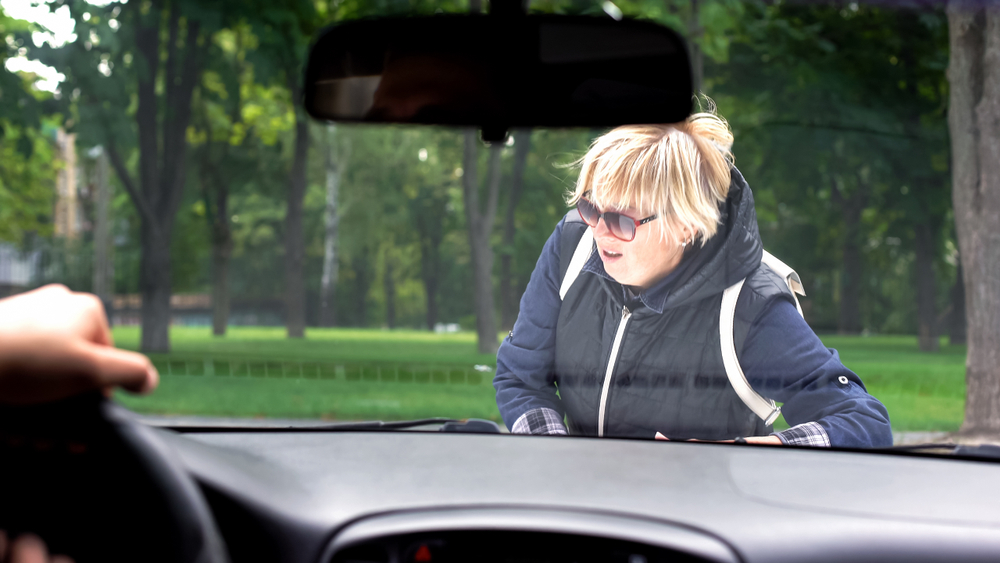Heavy traffic in Calgary, Alberta, has become a persistent issue, exacerbated by factors like population growth and urban expansion. The congestion often transforms roads into chaotic scenes, creating a breeding ground for traffic accidents.
When compounded with driver negligence, the situation worsens. Rushed and distracted drivers contribute to a higher likelihood of collisions, further burdening emergency services and causing delays for other commuters.
Efforts to address this challenge involve a combination of infrastructure improvements and public awareness campaigns to promote responsible driving habits.
Authorities are continually working to strike a balance between urban development and maintaining efficient, safe traffic flow to reduce the risk of accidents in Calgary’s challenging traffic conditions.
If you suffered injuries in a motor vehicle accident that occurred in heavy traffic and resulted from another driver’s negligence, you are not alone. A knowledgeable car accident lawyer in Calgary can explore your available legal options, file a claim with the at-fault driver’s insurance company, and pursue the financial recovery you deserve for your injuries.
What Accidents Result From Heavy Traffic and Driver Negligence in Calgary?

Heavy traffic in Calgary, Alberta, coupled with driver negligence, sets the stage for various types of accidents that can have severe consequences. One common occurrence is rear-end collisions, where drivers fail to maintain a safe following distance.
With bumper-to-bumper traffic, sudden stops become more frequent, making it imperative for drivers to stay alert. However, negligence in this regard often leads to rear-end accidents, causing severe injuries and vehicle damage.
Another prevalent issue is lane-changing mishaps. In heavy traffic, the temptation to switch lanes impulsively arises, often without signalling or checking blind spots adequately. This recklessness increases the likelihood of sideswipe collisions and, in more severe cases, can lead to multi-vehicle pileups.
Intersection chaos is another consequence of heavy traffic and negligent driving in Calgary. Drivers who are eager to beat the traffic may run red lights or fail to yield, resulting in T-bone collisions. These accidents can cause significant injuries, especially if vehicles are travelling at high speeds.
The increased congestion also contributes to a higher incidence of fender benders and minor collisions. Slower-moving traffic requires constant adjustments, and a momentary lapse in attention can result in minor accidents with major inconveniences.
While these collisions may not cause severe injuries, they contribute to overall traffic chaos and can lead to secondary accidents as other drivers try to navigate around the scene.
Moreover, heavy traffic amplifies the effect of distracted driving. The frustration of stop-and-go traffic prompts some drivers to engage in activities like texting, eating, or using electronic devices, diverting their attention from the road. This distraction, combined with the close proximity of vehicles, increases the risk of accidents.
Heavy traffic in Calgary, Alberta, frequently exacerbates the potential for various accidents due to driver negligence. From rear-end collisions and lane-changing mishaps to intersection chaos and an uptick in minor accidents, the consequences are far-reaching.
Addressing this issue requires a multifaceted approach, including public awareness campaigns, stricter enforcement of traffic rules, and ongoing efforts to improve infrastructure to alleviate congestion and enhance overall road safety.
Injuries that Accident Victims May Suffer in Calgary Car Accidents
Motor vehicle accidents in heavy traffic, compounded by another driver’s negligence, can result in a range of injuries for both drivers and passengers.
One common injury is whiplash, often experienced in rear-end collisions. An abrupt collision can cause the neck to jerk forward and backward rapidly, leading to soft tissue injuries and ongoing neck pain.
Head injuries are another prevalent consequence, especially in accidents involving side impacts or rollovers. Drivers and passengers are susceptible to hitting their heads on the steering wheel, dashboard, or windows, causing concussions, lacerations, or more severe traumatic brain injuries.

In the chaos of heavy traffic accidents, broken bones are not uncommon either. The force of a collision can lead to fractures, particularly in the limbs, as occupants may brace themselves instinctively, absorbing the impact in the process.
Chest injuries, including bruising and rib fractures, can occur because of seatbelts in a collision. While seatbelts are crucial for overall safety, their sudden tightening in an accident can result in chest injuries.
Internal injuries are another serious concern in high-impact accidents. The force exerted on the body can cause damage to internal organs, leading to bleeding or other life-threatening conditions. Such injuries may not always be immediately apparent, underscoring the importance of a prompt medical evaluation following a traffic accident.
Psychological trauma is another dimension of the aftermath. Surviving a heavy traffic accident can leave lasting emotional scars, contributing to conditions like post-traumatic stress disorder (PTSD) for both drivers and passengers. Witnessing severe injuries or fatalities in such situations can exacerbate the emotional toll.
Addressing the potential injuries stemming from heavy traffic accidents requires a holistic approach, encompassing public awareness campaigns on safe driving practices, stricter enforcement of traffic rules, and ongoing efforts to improve traffic flow and infrastructure in Calgary.
By addressing both the physical and psychological aspects of injuries resulting from negligence in heavy traffic, the local community can work towards creating safer road environments for everyone.
Proving that Another Driver Caused an Accident in Heavy Traffic
Proving that another driver caused an accident in heavy traffic in Calgary, Alberta, requires a thorough approach and a combination of evidence. Eyewitness accounts play a crucial role in establishing the sequence of events.
Gathering contact information from individuals who witnessed the accident can provide invaluable statements regarding the at-fault driver’s actions.
Photographic evidence is another powerful tool in demonstrating negligence. In the midst of heavy traffic, capturing clear images of the accident scene, vehicle positions, and relevant roadway conditions can provide a visual narrative.
Photographs documenting traffic signals, road signs, and any visible damages can further strengthen the personal injury case.
Dashcam footage, if available, offers an objective perspective on the incident. Many drivers use dashcams to record their journeys, and this footage can provide an unbiased account of the events leading up to and during the accident. Retrieving and preserving this footage is crucial for building a compelling case.
Police reports also serve as official documentation of the accident. Law enforcement officers who respond to the scene gather information from involved parties, witnesses, and their own observations.
Obtaining a copy of the police report can provide essential details and contribute to establishing fault for the crash.
Medical records also become crucial in proving the extent of injuries resulting from the accident. Seeking prompt medical attention and maintaining a detailed record of diagnoses and treatments can substantiate the overall effect of the at-fault driver’s negligence on the well-being of the injured parties.
In some cases, expert witnesses, such as accident reconstruction specialists, may be called upon to provide professional insights. These experts analyze the available evidence to recreate the sequence of events leading to the accident, offering a technical perspective that can support claims of negligence.
Communications and admissions made by the at-fault driver at the scene or afterward can also be critical. Statements acknowledging fault or detailing distractions can serve as powerful evidence. Document such statements promptly to avoid potential retractions or changes in the narrative.
Building a case to prove another driver’s negligence in heavy traffic requires a comprehensive approach that combines witness statements, photographic evidence, official reports, medical records, expert insights, and any admissions that the at-fault party made.
By meticulously assembling these elements, individuals can strengthen their position and seek appropriate compensation for damages and injuries resulting from the accident.
Settling versus Litigating a Car Accident Claim
When faced with a car accident claim in Calgary, Alberta, resulting from another driver’s negligence or reckless behaviour, individuals often grapple with the decision of settling versus litigating the matter.

Settling provides a quicker resolution involving negotiations between parties and their respective insurance companies. It can also offer a sense of closure and avoid the protracted legal process.
However, settling comes with its considerations. For example, the offered settlement may not fully account for the extent of damages, including lost income, inconvenience, and pain and suffering.
Accepting a settlement prematurely may inadvertently waive the right to pursue further compensation if hidden injuries or complications arise later.
Litigating, on the other hand, involves taking the matter to court. This approach allows for a thorough examination of the evidence, witness testimonies, and legal arguments.
It provides the opportunity to present a case before a judge or jury, seeking a favourable judgment that accurately reflects the damages that the accident victim incurred due to the at-fault driver’s actions.
While litigation may take more time and involve legal fees, it can be essential in complex cases where the insurance company disputes fault or the offered settlement is inadequate.
Litigation also allows for a more comprehensive assessment of non-economic damages, such as pain and suffering, which may not be adequately addressed in a settlement negotiation.
Before deciding between settling and litigating, individuals should assess the strength of their case, the available evidence, and the potential outcomes. Seeking legal advice becomes crucial at this juncture to navigate the complexities of personal injury law in Alberta.
Mediation is a middle-ground option that can facilitate a resolution outside of court. A neutral third party assists in negotiating an agreement between the parties involved. This process aims to find common ground and reach a mutually acceptable settlement, potentially avoiding the adversarial nature of litigation.
Ultimately, the decision to settle or litigate depends on the unique circumstances of the case, the severity of damages, and the willingness of the parties to negotiate.
Consulting a personal injury lawyer in Calgary can provide invaluable guidance, helping individuals make informed decisions that align with their best interests and ensure fair compensation for the damages they suffered due to another driver’s negligent or reckless behaviour.
Recovering Compensation for Injuries and Losses
Recovering financial compensation for injuries suffered in a Calgary car accident involves a comprehensive evaluation of damages.
One crucial component is compensation for lost earnings, which encompasses income lost during the recovery period. Injured individuals are entitled to recover income they would have earned if not for the accident.
Loss of earning capacity considers the long-term effect on an individual’s ability to work and earn a living. If injuries result in diminished work capabilities, individuals may seek compensation for the potential income they would have earned in the future.
Emotional distress is another valid aspect of damages, recognizing the psychological toll of the accident on the victim. Compensation aims to address the mental anguish, anxiety, and trauma experienced as a direct result of the negligent driver’s actions.
Past and future pain and suffering reflect the physical and emotional pain that the victim endured due to the car accident. This compensation considers the immediate and ongoing consequences of injuries, including medical treatments, rehabilitation, and the effect on overall quality of life.
Loss of life enjoyment accounts for the diminished ability to engage in and enjoy life’s activities following the car accident. It acknowledges the restrictions that various injuries impose on daily routines, hobbies, and social interactions.
Compensation for loss of spousal companionship recognizes the strain on relationships that the car accident causes. When injuries affect one’s ability to provide emotional support or contribute to the household, the injured party may seek compensation for the resulting effect on spousal companionship.
Additionally, individuals may pursue compensation for loss of the ability to use a body part. If the accident results in the impairment or loss of function in a specific body part, such as limbs or organs, compensation is available to address the physical limitations and the effect on overall well-being.
Navigating the process of seeking compensation in Calgary involves gathering relevant evidence, including medical records, expert opinions, and documentation of lost earnings.
Consulting a personal injury lawyer becomes crucial in presenting a compelling case that accurately reflects the extent of damages suffered due to another driver’s negligence. Through a thorough assessment and strategic legal approach, individuals can pursue fair and just compensation for the multifaceted effects of their car crashes.

Call an Experienced Car Accident Lawyer in Your Area Today
If you sustained injuries in a Calgary, Alberta, auto accident that occurred in heavy traffic, you need to consult with a knowledgeable Calgary personal injury lawyer right away.
Your lawyer can investigate your accident circumstances swiftly and file a claim or lawsuit on your behalf, seeking the financial compensation you deserve. If necessary, your lawyer can also take your case to civil jury trial and pursue the monetary recovery you deserve for your losses.
